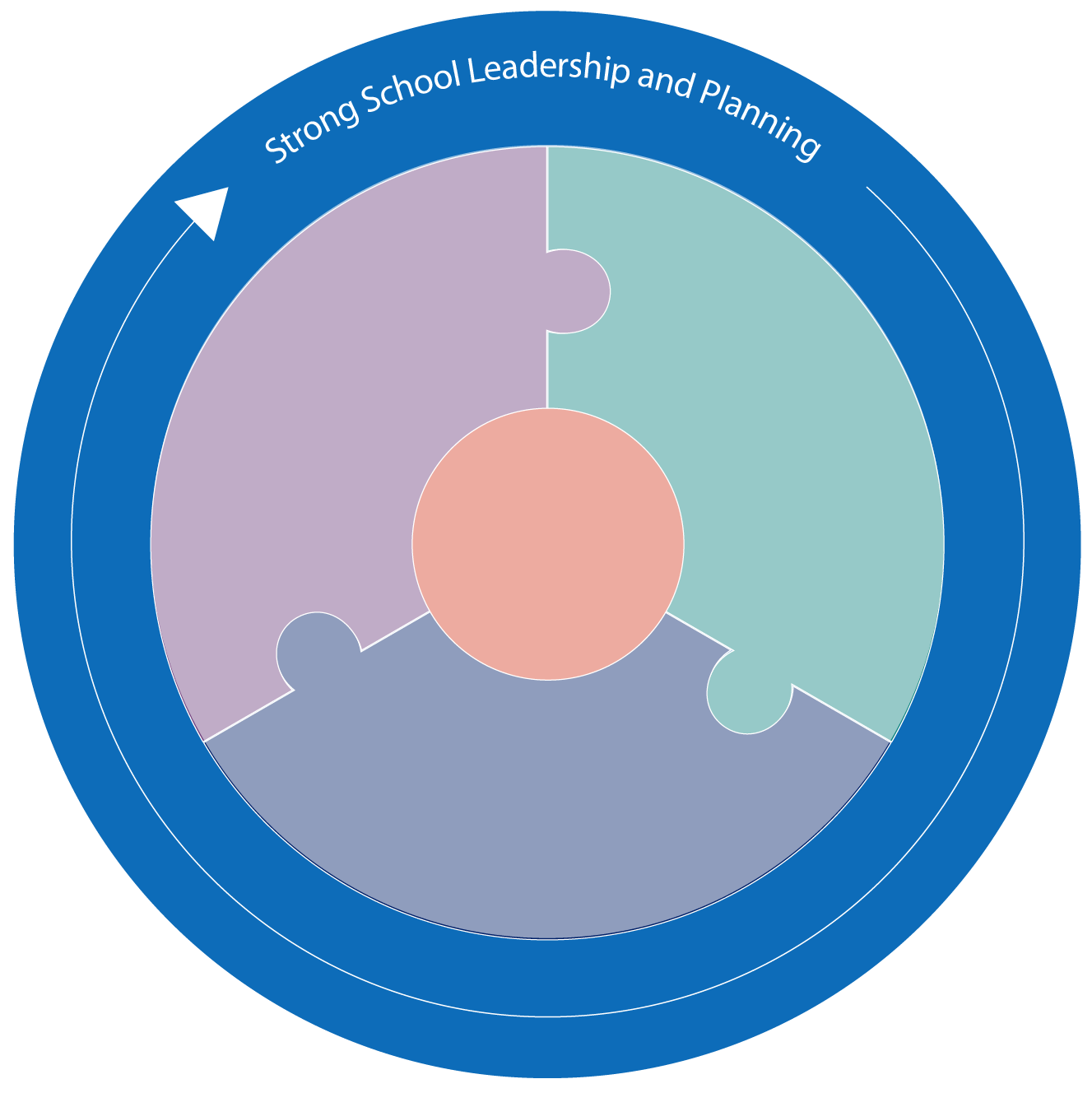Lever 1
STRONG SCHOOL LEADERSHIP AND PLANNING
Effective campus instructional leaders with clear roles and responsibilities develop, implement, and monitor campus systems and structures that are aligned to a compelling school mission, vision, values, and goals rooted in student achievement.

District Commitments:
District commitments describe what local education agencies do to ensure that schools are set up for success.
- The district places its most effective school leaders in its highest- need schools.
- The district recognizes the unique needs of low-performing schools and provides the flexibility to address those needs.
- The district provides opportunities for ongoing support and coaching of the campus leader.
- The district provides the campus with adequate funding and sufficient control over its budget to ensure access to necessary resources for the implementation of the school’s improvement plan and high-quality instruction to meet students’ learning needs.
- The district supports principals by protecting their time dedicated to school instructional leadership.
- The district ensures that principal supervisors have the necessary authority to create conditions for school success (e.g., remove barriers).
- The district policies and practices prioritize principal and principal supervisor instructional leadership (e.g., manageable span of control, time dedicated to instructional practices).
- The district has support systems in place to collaborate with school leaders to share the district’s vision and mission and establish clear expectations for the district’s community to help the school reach common goals.
Essential Actions
Essential Actions describe what the most effective schools do to support powerful teaching and learning. The first essential action listed under the priority is foundational — schools should address first in continuous improvement efforts, as they provide the foundation upon which the other essential actions develop.
1.1
FOUNDATIONAL ESSENTIAL ACTION
Develop campus instructional leaders (principal, assistant principal, counselors, teacher leaders) with clear roles and responsibilities
- Campus instructional leaders have clear, written, and transparent roles and responsibilities, and core leadership tasks are scheduled on weekly calendars (observations, debriefs, team meetings).
- Performance expectations are clear, written, measurable, and match the job responsibilities.
- Campus instructional leaders use consistent, written protocols and processes to lead their department, grade-level teams, or other areas of responsibility.
- Campus instructional leaders meet on a weekly basis to focus on student progress and formative data.
- Principal improves campus leaders through regularly scheduled, job-embedded professional development consistent with best practices for adult learning, deliberate modeling, and observation and feedback cycles.
1.2
Compelling and aligned vision, mission, goals, values focused on a safe environment, high expectations, and rigorous instruction
-
Stakeholders are engaged in creating and continually refining the campus’ mission, vision, values, and goals.
-
Campus mission, vision, values, and goals reflect strategies and activities grounded in research for all components of campus and instructional leadership.
-
Campus messages, policies and practices are aligned to the mission and vision, and demonstrate high expectations and shared ownership for student success, with a drive towards college and career readiness and post-secondary success.
1.3
Focused plan development and regular monitoring of implementation and outcomes
-
There is an improvement plan in place with few focused priorities, clear timelines, milestones, metrics, and task owners that address the root causes of low performance.
-
Campus leaders monitor plan implementation and hold task owners accountable for execution of the work.
-
Campus leaders regularly use data and other evidence to track progress towards intended outcomes.
-
If milestones and benchmarks are not met, campus leaders make modifications to reach the required result.
-
Data systems exist to track all discipline referrals, attendance, and interventions and the data is regularly reviewed to identify trends and adapt accordingly.

